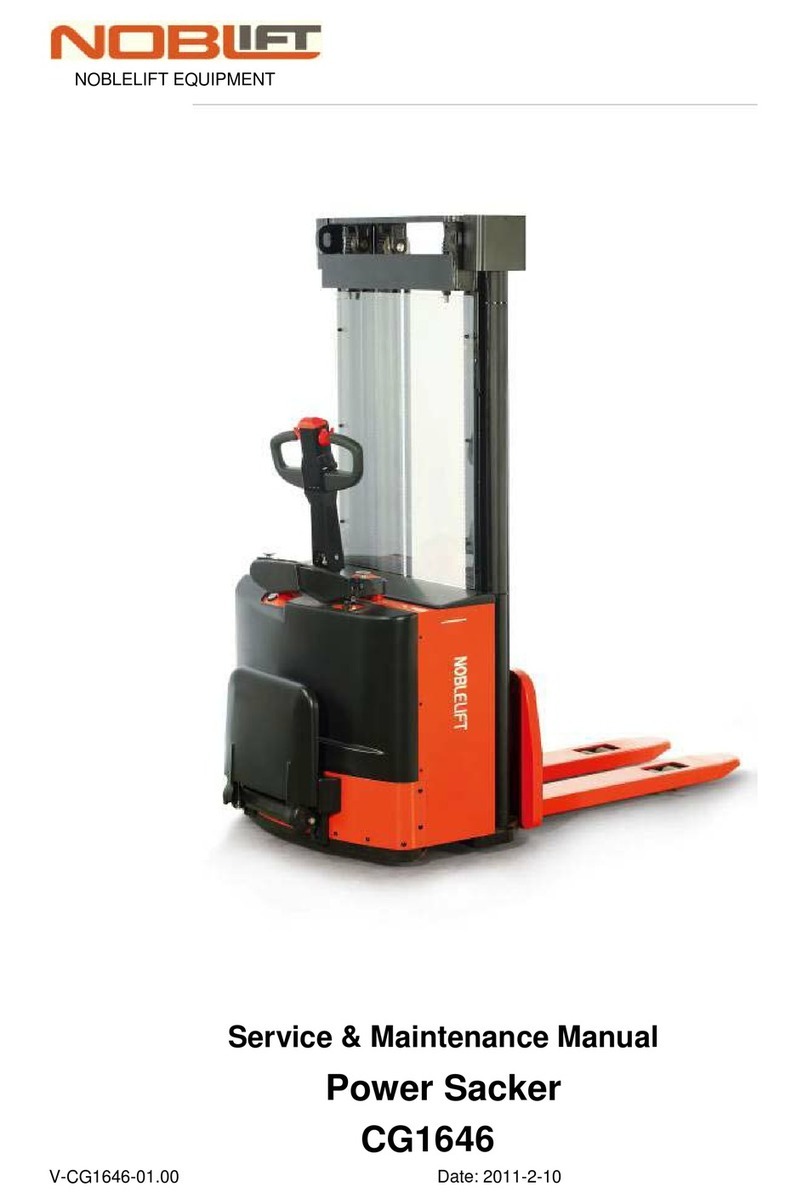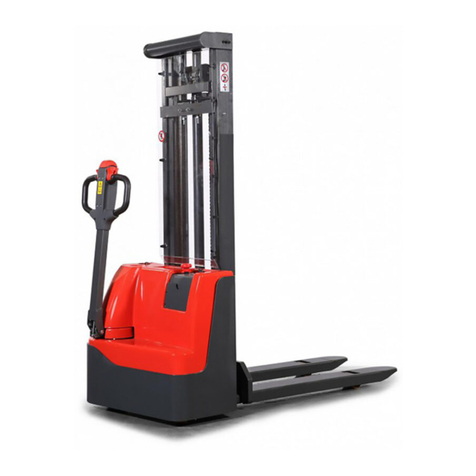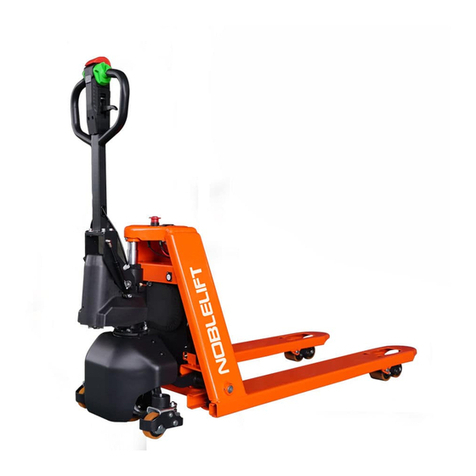4
TABLE OF CONTENTS
1. CORRECT APPLICATION.......................................................................................6
2. DESCRIPTION OF THE SCISSOR LIFT PALLET TRUCK......................................7
a. Main components ............................................................................................7
b. Main technical data..........................................................................................8
c. Description of the safety devices and warning labels ......................................9
d. Identification plate..........................................................................................10
3. WARNINGS AND SAFETY INSTRUCTIONS ........................................................10
4. COMMISSIONING, TRANSPORTING, STORAGE/ REASSEMBLING..................11
a. Commissioning – Tiller assembling ...............................................................11
b. Hydraulic valve adjustment............................................................................12
c. Lifting/transporting .........................................................................................13
d. Storage/ Reassembling .................................................................................13
5. DAILY INSPECTION..............................................................................................13
6. OPERATING INSTRUCTIONS..............................................................................14
a. Parking..........................................................................................................14
b. Lifting.............................................................................................................14
c. Lowering .......................................................................................................14
d. Moving...........................................................................................................14
e. Quick Lift (ACX 10M) ......................................................................................15
f. Malfunctions....................................................................................................15
7. BATTERY CHARGING AND REPLACEMENT (ACX 10E) ....................................15
a. Replacement .................................................................................................15
b. Battery indicator.............................................................................................16
d. Charging with Onboard charger (only ACX 10E, optional).............................16
e. Charging with external charger (only ACX 10E, optional)..............................17
8. REGULAR MAINTENANCE ..................................................................................17
9. TROUBLE SHOOTING..........................................................................................19
10. HYDRAULIC FLOW DIAGRAM AND CIRCUIT DIAGRAM..................................21
a. Hydraulic flow diagram ..................................................................................21
b. Circuit diagram (ACX 10E) ............................................................................21
11. SPECIALIZED STIPULATIONS FOR THE US- AMERICAN MARKET................22
a. Foreword/ Compliance..................................................................................22
b. Description warning labels (only US-market).................................................23
12. DECLARATION OF CONFORMITY (valid, if sold within the EU) ........................26


































